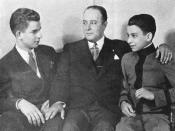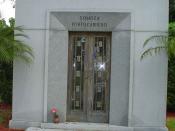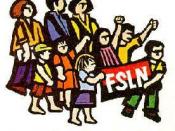During the late 1970's, Nicaragua was in a very poor state. The standard of living was very low, as those who did not have jobs looked in vain for a way to make money. Two hundred thousand peasants did not own any land, and literacy rates were as low as 30 percent. As the people of Nicaragua grew frustrated with their poor lives, or gave up hope in the system, they turned to the idea of revolution. People who believed in change started to take action at this time. Not only did individuals fight for their rights and change, large groups formed into organized parties to try and fight the current system in the country. A group called the National Sandinista Liberation Front (NSFL) opposed the leader of the country, Somoza, in order to make changes in the "system". They felt that the system was corrupt and began to fight for land rights and equality among the classes.
In 1979 when the NSFL took over the government by armed forces, the Sandinistas began to take make impressive strides in the country and appealed to the international community through the early 1980's. However, because the policies of the Sandinistas emphasized Marxist ideology, the group lost support of allied countries as it began to enforce government control on the economy. The fall of the Sandinistas was lead by Marxist ideology and it took place in the economy, this is what caused the government to break apart.
Anastasio Somoza Debayle was the son of the previous Somoza dictator and became dictator himself in 1956. During his dictatorship, he ran against the National Sandinista Liberation Front in the 1967 election. This group was still small and though they had committed terrorist acts, the United States felt that they were still not a threat to...


